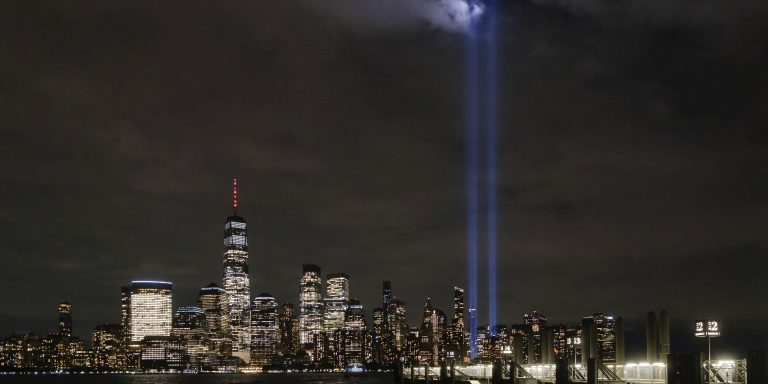INTELBRIEF
September 12, 2022
IntelBrief: 21 Years After 9/11, What Does the Terror Threat Facing the U.S. Look Like?

Bottom Line Up Front
- The threat posed to the U.S. homeland by groups like al-Qaeda and the Islamic State has been reduced significantly, yet these organizations, their affiliates, and the ideology of Salafi-jihadism itself are still capable of inspiring homegrown violent extremists in the West.
- The late July killing of al-Qaeda leader Ayman al-Zawahiri in a drone strike in Kabul, Afghanistan, may seem like the logical bookend to what has been a defining threat, but his death does not signal the end of al-Qaeda.
- Twenty-one years after the 9/11 attacks, the terrorist threat to the U.S. homeland is remarkably more diverse and includes not only Salafi-jihadists but also violent far-right extremists, conspiracy theorists, and a host of anti-government agitators and domestic terrorists.
- What used to be a fairly consistent and homogenous threat from Sunni jihadists, has given way to a variegated attack matrix, the most defining feature of which is the broad range of ideologies motivating violence.
Following yesterday’s twenty-one-year anniversary of al-Qaeda’s September 11, 2001, terrorist attacks, it is worth reflecting on the nature of the current threat and how it has evolved over time. The threat posed to the U.S. homeland by Salafi-jihadi groups like al-Qaeda and Islamic State has been reduced significantly. However, both of these organizations, as well as their affiliates, and the ideology of Salafi-jihadism itself, are still capable of inspiring homegrown violent extremists in the West. After twenty years of the U.S.’s Global War on Terror, the leadership and upper echelon of al-Qaeda and IS have been successively winnowed down. Aggressive armed drone campaigns and improvements in homeland security have blunted the impact of large, bureaucratized terrorist organizations. In an effort to adapt, these organizations have shifted to an affiliate or franchise model, where regional branches pursue a blend of local and global objectives. Some of these branches, including many throughout sub-Saharan Africa, have vastly improved their capabilities and could seek to target the West as their priorities evolve.
The late July killing of al-Qaeda leader Ayman al-Zawahiri in a drone strike in Kabul, Afghanistan, may seem like the logical bookend to what has been a defining threat. But Zawahiri’s death does not signal the end of al-Qaeda, and with the Taliban in control of most of the territory in Afghanistan, there is a high likelihood that the country will remain a safe haven for transnational terrorist groups, including al-Qaeda. Afghanistan is also home to one of the Islamic State’s most potent affiliates, Islamic State Khorasan (IS-K), a group that recently conducted a suicide attack targeting the Russian embassy in Kabul. There are concerns within the U.S. intelligence community that IS-K could develop the capabilities to attack U.S. interests around the globe.
Yet more comprehensively, the terrorist threat to the U.S. homeland is remarkably more diverse than at any point over the previous two decades. It now includes not only Salafi-jihadists but also violent far-right extremists, conspiracy theorists, and a host of anti-government agitators and domestic terrorists. The threat from the far-right emanates from organizations and groups, including The Base and the Atomwaffen Division (also known as National Socialist Order), on the one hand, and the Proud Boys, Oath Keepers, and Three Percenters, on the other. These organizations are representative of the threat posed by groups organic to the United States. There is also a far-right ecosystem, fueled by virulent racist propaganda, conspiracies, and disinformation, that inspire lone actor attacks, like those in El Paso, TX; Pittsburgh, PA; and Buffalo, NY, to name just a few. The Capitol Insurrection of January 6, 2021, is further emblematic of the threat.
What was mostly a monochromatic threat from Salafi-jihadist groups and those individuals they sought to inspire, has become a kaleidoscope with new threats from white supremacists and neo-Nazis, shadowy anarchist elements, neo-Luddites, and the extreme fringe of violent incels—politicized involuntary celibates fueled by misogyny. Popular theories like accelerationism, whose proponents believe in the complete destruction of current systems of government, appeal to individuals that claim allegiance to movements on both the far-left and the far-right. Newer extremist groups, including the Boogaloo Bois, are a byproduct of this trend, as it remains difficult to place them squarely on the ideological spectrum. The COVID-19 pandemic has also broadened the tent, drawing in anti-vaxxers and those opposed to government measures to stem the spread of the coronavirus.
FBI Director Christopher Wray has also warned about a phenomenon sometimes referred to as “salad bar” ideology because it provides extremists with options similar to a buffet. This means extremists are borrowing from numerous, and at times seemingly contradictory, ideological foundations. Whatever one labels the phenomenon, what it tells us is that today’s extremists are more comfortable ‘mixing and matching’ distinct strands of broader ideologies. In one week in August in the United States, four Muslim-Americans were targeted and murdered in an anti-Shia motivated attack, a far-right extremist attacked an FBI office in Cincinnati, Ohio, and famous author Salman Rushdie was stabbed by an American citizen who was inspired by the Iranian regime and the Islamic Revolutionary Guard Corps (IRGC). What used to be a fairly consistent and homogenous threat from Sunni jihadists, has given way to a variegated attack matrix, the most defining feature of which is the broad range of ideologies motivating violence.